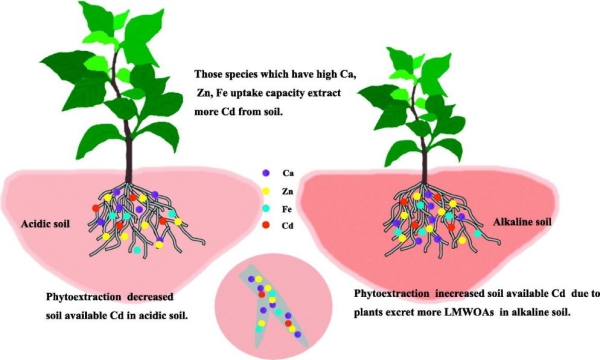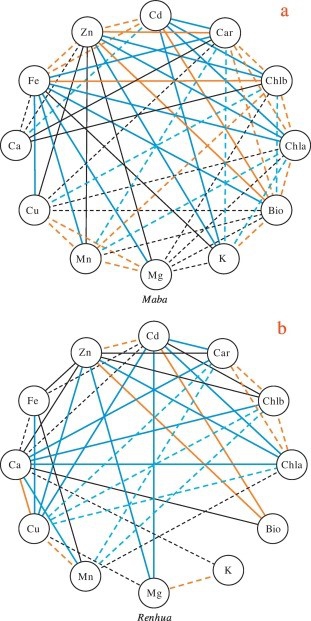Comparison of Cd phytoextraction ability of several plants
Remediation of soil contaminated by heavy metals has become a hot topic in the world, and phytoremediation technology is the most widely used. Compared with physical and chemical remediation, phytoremediation technology has the advantages of high cost-effectiveness, in-situ application, less invasive, less destructive and so on.
In order to screen more hyperaccumulators and explore their adaptive mechanism to different soils, under the guidance of Prof. LI Zhian, HUANG Rong, a doctoral student from South China Botanical Garden under Chinese Academy of Sciences conducted a phytoextraction experiment with five Cd hyperaccumulators (Amaranthus hypochondriacus, Celosia argentea, Solanum nigrum, Phytolacca acinosa and Sedum plumbizincicola) in two soils with different pH.
Results showed most accumulator plants grew better in the acidic soil, with 19.59–39.63% higher biomass than in the alkaline soil, except for S. plumbizincicola. In the acidic soil, C. argentea and A. hypochondriacus extracted the highest amount of Cd. In the alkaline soil, S. plumbizincicola performed best, mainly as a result of high Cd accumulation in plant tissue. Most plants achieved leaf Cd bioconcentration factor (BCF) of >10 in the acidic soil, compared to <4 in the alkaline soil. In the acidic soil, plants slightly decreased soil available Cd. Those species which have high Ca, Zn, Fe uptake capacity extract more Cd from soil, and a positive correlation was found between the concentrations of Cd and Ca, Zn, Fe in leaves.
In summary, acidic soil was of higher potential to recover from Cd contamination by phytoextraction, while in the alkaline soil, S. plumbizincicola showed potential for Cd phytoextraction.
The relevant results of this study have recently been published in a well-known international academic journal Science of the Total Environment.
For further reading, please refer to: https://www.sciencedirect.com/science/article/pii/S0048969720310925?dgcid=coauthor#f0040.

Figure 1. Adaptation mechanism of different hyperaccumulators to different soils

Figure 2. Pearson's correlation analysis of elements in different plants leaves.
File Download: